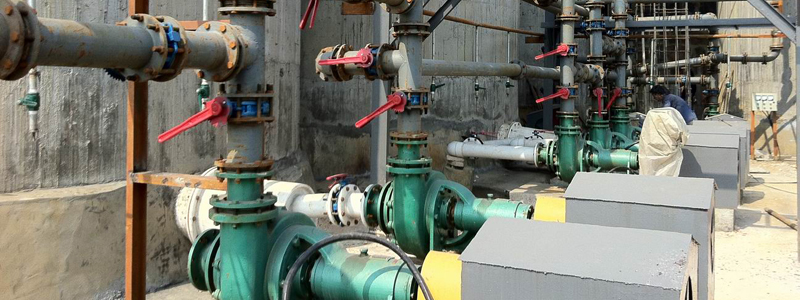Valve corrosion is one of the main causes of valve failure, corrosion can be divided into six types, namely, electrical corrosion, high temperature corrosion, crevice corrosion, pitting corrosion, intergranular corrosion and friction corrosion. During corrosion, chemical or electrochemical reactions take place at the interface of the metal, resulting in the transition of the metal to an oxidizing (IONIC) state. This will significantly reduce the strength, plasticity, toughness and other mechanical properties of metal materials, destroy the geometry of metal components, increase wear between parts, deterioration of electrical and optical physical properties, shorten the service life of equipment, even caused fires, explosions and other catastrophic accidents. Therefore, it is necessary to prevent metal corrosion. Below, we will introduce you to 6 types of valve corrosion.
1. Electrical Corrosion
When two different metals are in contact with and exposed to corrosive liquids and Electrolytes, the GALVANIC current causes the anode to corrode increasing the current. Corrosion is usually localized near the point of contact. The reduction of corrosion can be achieved by electroplating dissimilar metals.
2. High-Temperature Corrosion
To predict the effect of high-temperature oxidation, we need to test the data: 1) metal composition, 2) atmosphere composition, 3) temperature, and 4) exposure time. It is well known, however, that most light metals (those that are lighter than their oxides) form an unprotected oxide layer that sloughs off as time goes on. There are other forms of high temperature corrosion including vulcanization, carburization and so on.
3. Crevice Corrosion
This occurs in crevices, which block the diffusion of oxygen, creating regions of high and low oxygen that vary in solution concentration. In particular, there may be narrow gaps in the defects of connectors or welded joints, which are wide enough (generally 0.025 ~ 0.1 mm) to allow electrolyte solution to enter and form a short-circuit galvanic cell between the metal in the joints and the metal outside the joints And strong local corrosion occurs in the crack.
4. Pitting
When the protective film is destroyed or the corrosion product layer is decomposed, local corrosion or pitting occurs. Membrane rupture forms an anode and an unruptured membrane or corrosion product acts as a cathode, virtually establishing a closed circuit. Some stainless steels are prone to pitting in the presence of chloride ions. Corrosion occurs on the surface of a metal or at a rough location, due to these inhomogeneity.

5. Intergranular Corrosion
There are many reasons for intergranular corrosion. The result is a failure of almost the same mechanical properties along the grain boundary of the metal. Intergranular corrosion of AUSTENITIC stainless steel at temperatures of 800-1500 f without proper heat treatment or contact sensitization is subject to many corrosive agents (427-816 °c) . This condition can be eliminated by pre-annealing and quenching to 2000 F (1093 °C) , using low carbon stainless steel (c-0.03 Max) or stabilized niobium or titanium.
6. Fricition Corrosion
From the physical forces of wear and fracture, metals are dissolved through protective corrosion. The effect depends largely on force and speed. Excessive vibration or metal bending can have similar results. Cavitation is a common form of corrosion pump, stress corrosion cracking, high tensile stress and a corrosive atmosphere will cause metal corrosion. Under static load, the tensile stress of the metal surface exceeds the yield point of the metal, and corrosion occurs in the area where the stress is concentrated. In metal alternating corrosion and the establishment of high stress concentration of parts and components, avoiding such corrosion can be achieved by early stress relief annealing or the selection of appropriate alloy materials and design options. Corrosion fatigue. We usually associate static stress with corrosion.
Stress can lead to corrosion cracking, and cyclic loading can lead to fatigue corrosion. Fatigue corrosion occurs when the fatigue limit is exceeded under non-corrosive conditions. Surprisingly, when both types of corrosion are present at the same time, the damage is even greater. This is why we use the best corrosion protection under alternating stress.
Corrosion will disable the valve and affect the entire project. So embalming is necessary. Below we will introduce 4 valve anti-corrosion measures.
1. Reasonable material selection, all kinds of corrosive media on different materials are not the same, so it can meet the performance requirements under the premise of the selection of the corresponding corrosive media materials to make machine parts, working in this medium environment.
2. Surface protection, after a certain treatment so that the surface of the metal material or its products to form a protective layer to prevent the metal and the media.
3. Medium treatment, try to change the nature of the corrosive medium, in order to avoid or reduce metal corrosion. Media treatment is divided into two categories: one is to remove or reduce the harmful elements in the media, such as dehumidification, deoxidization, desalination, and so on; the other is to add corrosion inhibitors.
4. Electrochemical protection, using CATHODIC protection or anodic protection method to control the metal in the electrolyte from corrosion or reduce corrosion.
Post time: Jul-28-2021




